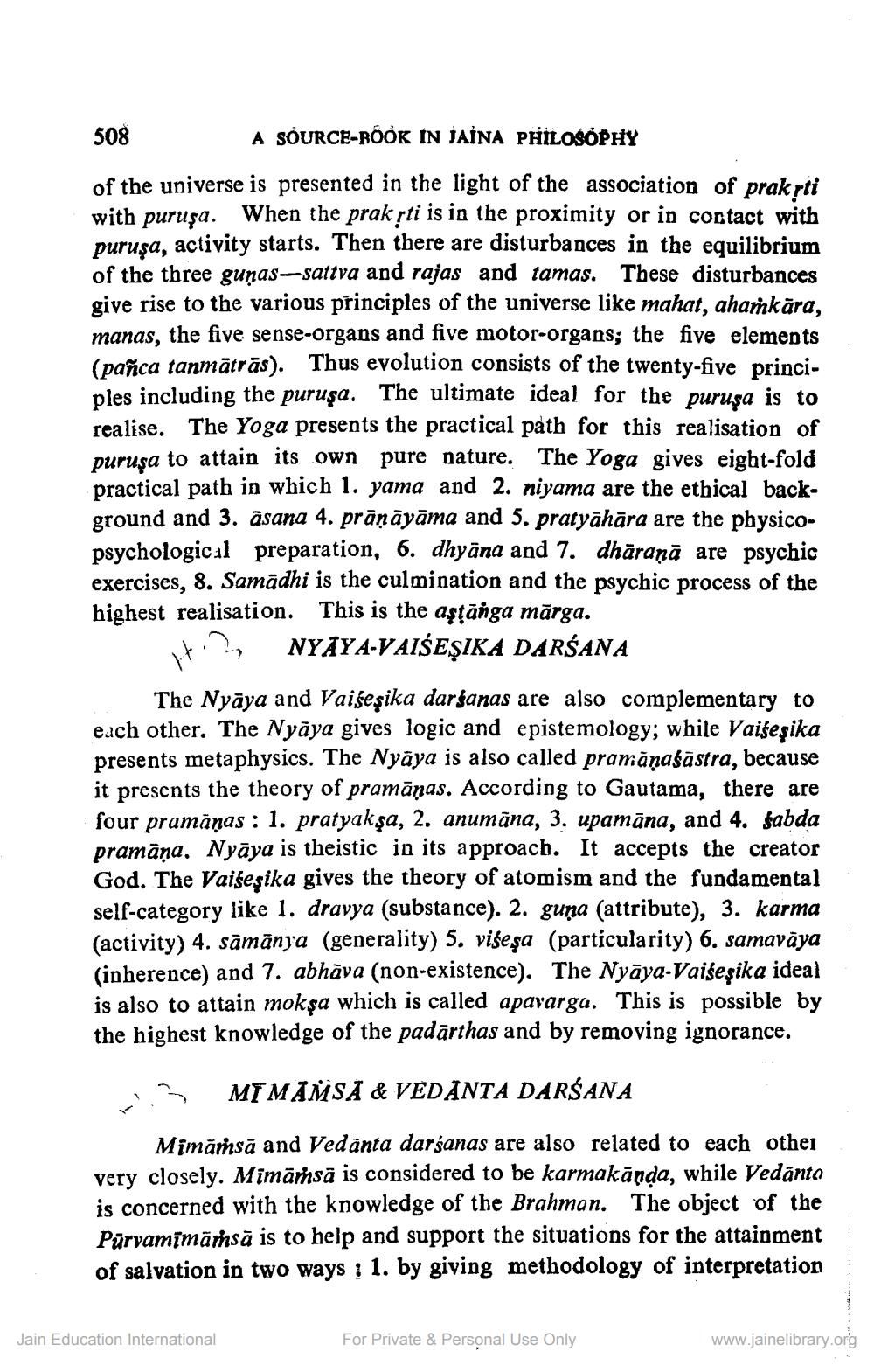________________
508
A SOURCE-BOOK IN JAINA PHILOSOPHY
of the universe is presented in the light of the association of prakṛti with puruşa. When the prakṛti is in the proximity or in contact with puruşa, activity starts. Then there are disturbances in the equilibrium of the three gunas-sattva and rajas and tamas. These disturbances give rise to the various principles of the universe like mahat, ahaṁkāra, manas, the five sense-organs and five motor-organs; the five elements (pañca tanmātrās). Thus evolution consists of the twenty-five principles including the puruşa. The ultimate ideal for the puruşa is to realise. The Yoga presents the practical path for this realisation of puruşa to attain its own pure nature. The Yoga gives eight-fold practical path in which 1. yama and 2. niyama are the ethical background and 3. asana 4. prāṇāyāma and 5. pratyāhāra are the physicopsychological preparation, 6. dhyāna and 7. dhāraṇā are psychic exercises, 8. Samādhi is the culmination and the psychic process of the highest realisation. This is the aṣṭānga mārga.
NYAYA-VAIŚEŞIKA DARŚANA
The Nyaya and Vaiseşika darsanas are also complementary to each other. The Nyāya gives logic and epistemology; while Vaiseşika presents metaphysics. The Nyaya is also called pramāṇaśāstra, because it presents the theory of pramāņas. According to Gautama, there are four pramāņas: 1. pratyakşa, 2. anumana, 3. upamana, and 4. sabda pramāṇa. Nyāya is theistic in its approach. It accepts the creator God. The Vaiseşika gives the theory of atomism and the fundamental self-category like 1. dravya (substance). 2. guna (attribute), 3. karma (activity) 4. sāmānya (generality) 5. viseşa (particularity) 6. samavāya (inherence) and 7. abhāva (non-existence). The Nyāya-Vaiśeşika ideal is also to attain mokşa which is called apavarga. This is possible by the highest knowledge of the padarthas and by removing ignorance.
MIMAMSA & VEDANTA DARSANA
Mimämsä and Vedanta darśanas are also related to each other very closely. Mimämsä is considered to be karmakāṇḍa, while Vedānta is concerned with the knowledge of the Brahman. The object of the Pūrvamīmāmsā is to help and support the situations for the attainment of salvation in two ways: 1. by giving methodology of interpretation
Jain Education International
For Private & Personal Use Only
www.jainelibrary.org




